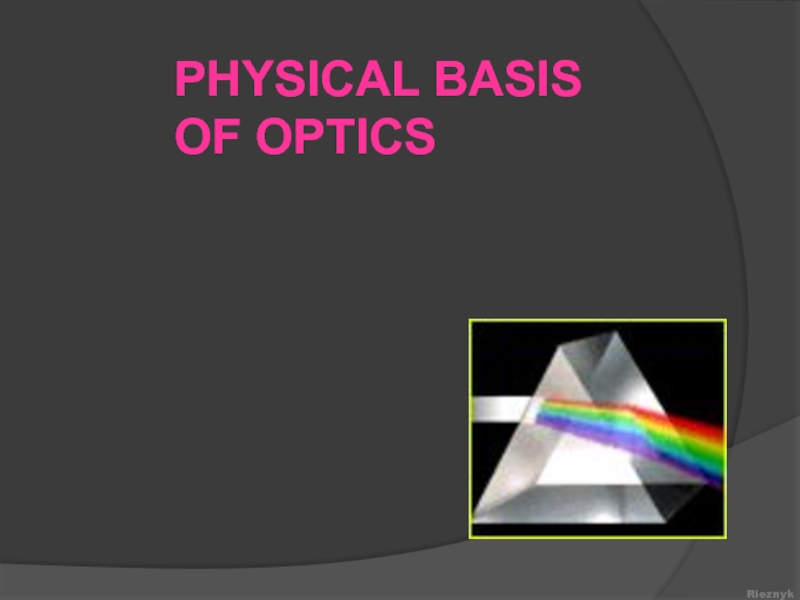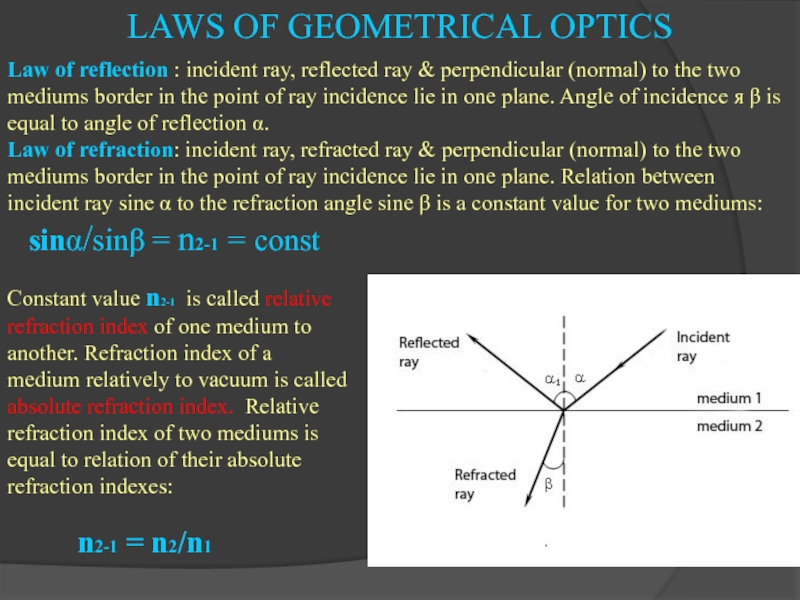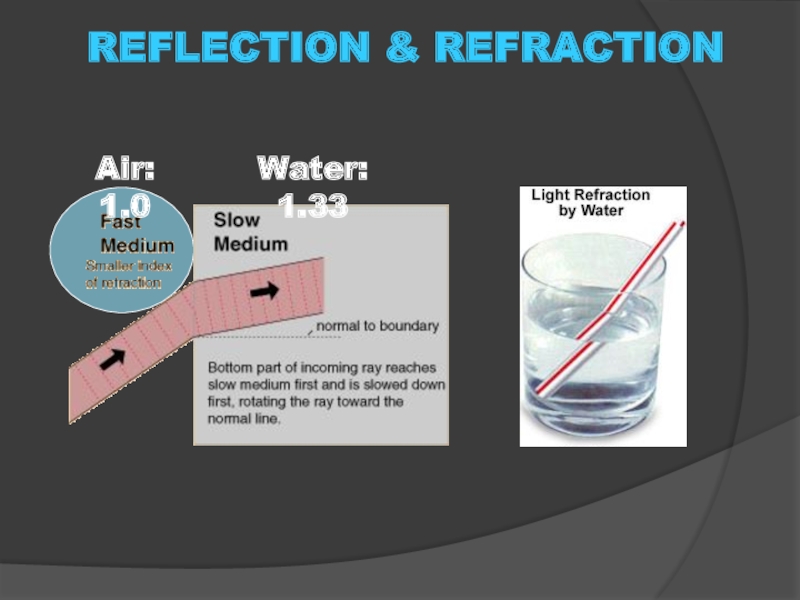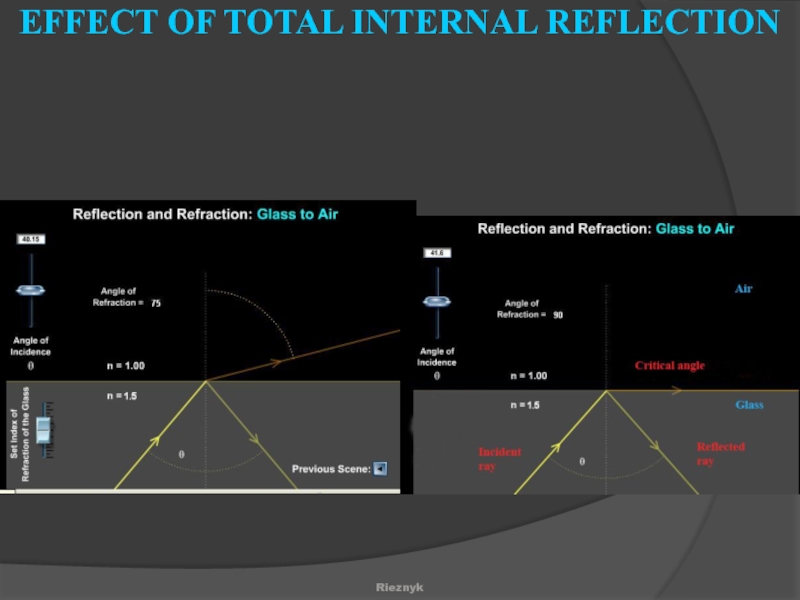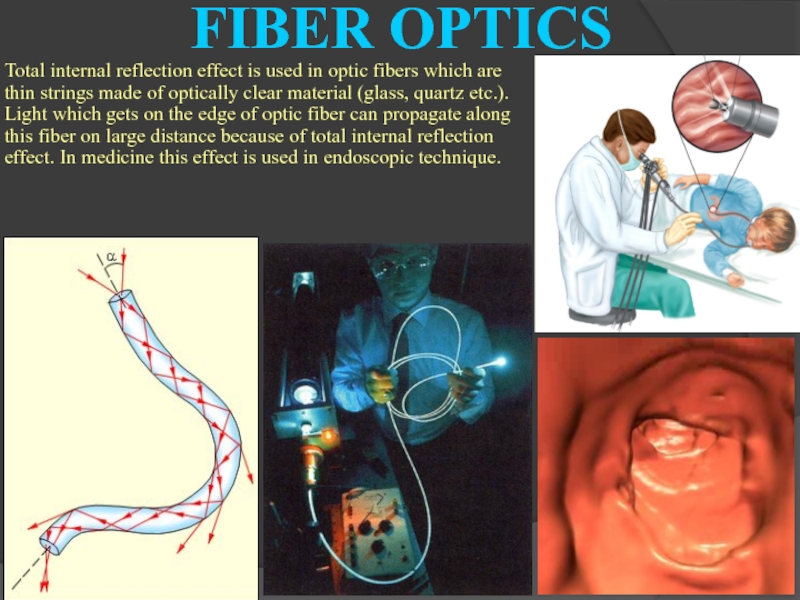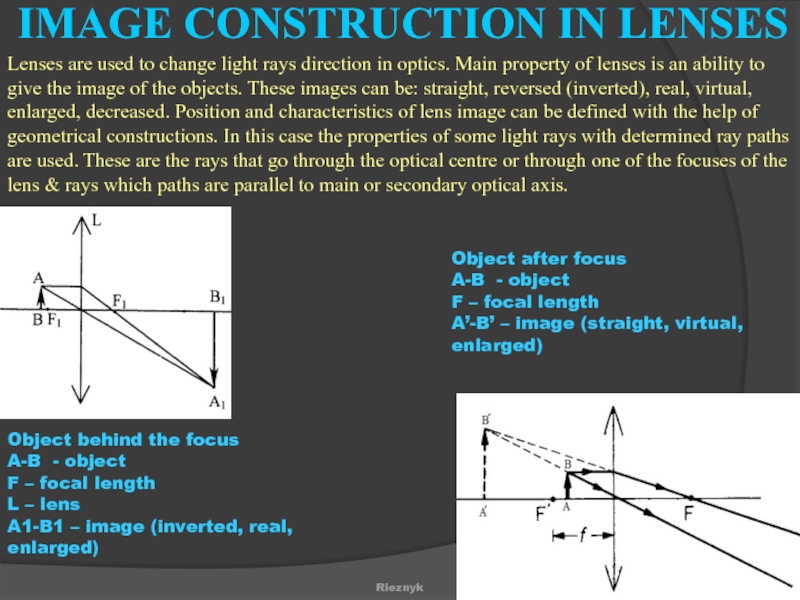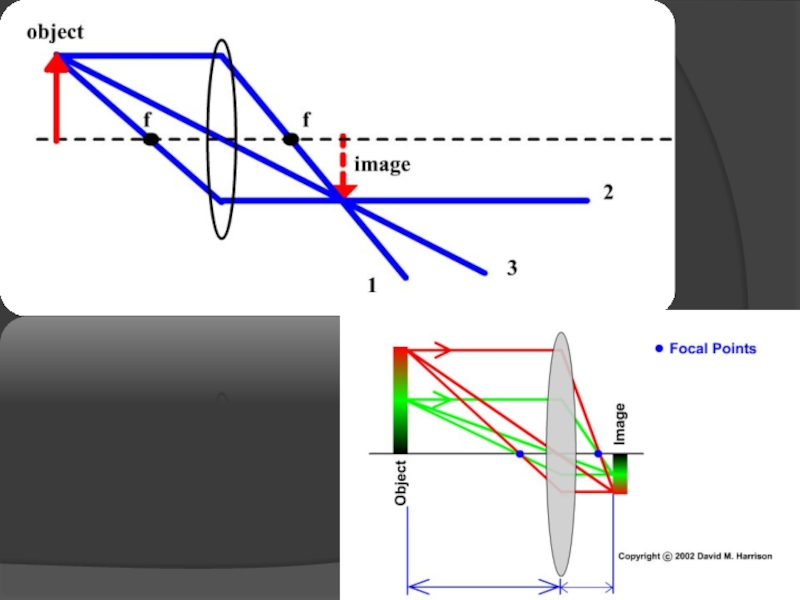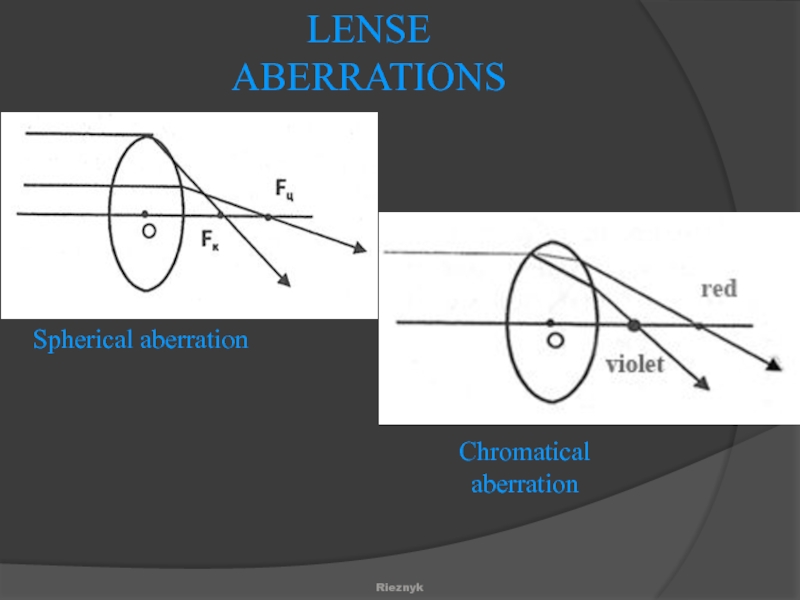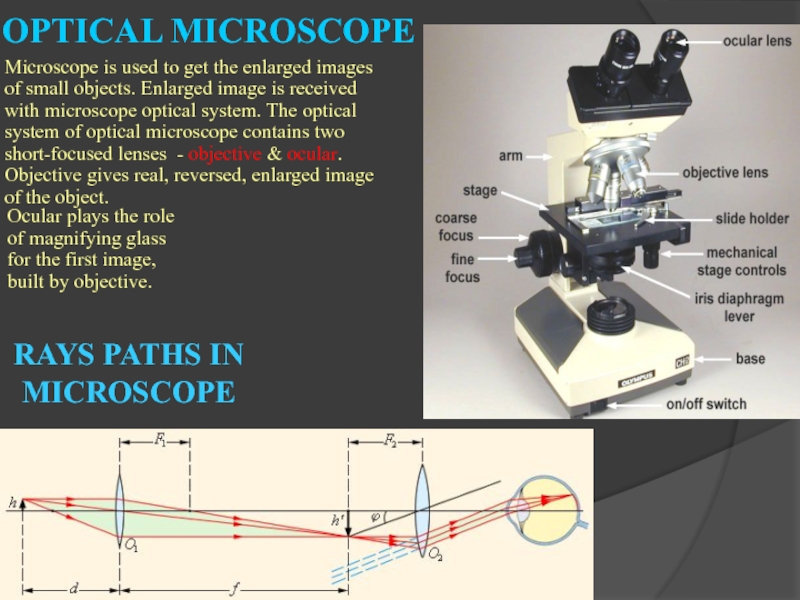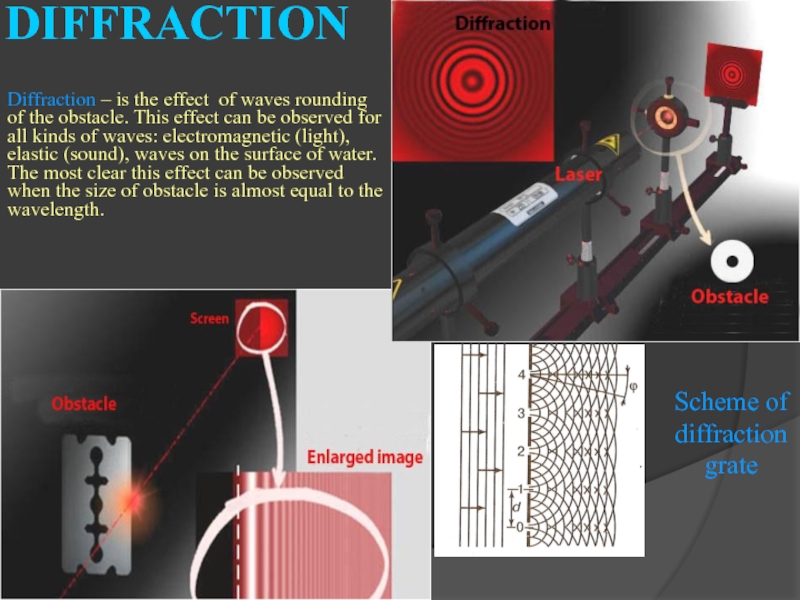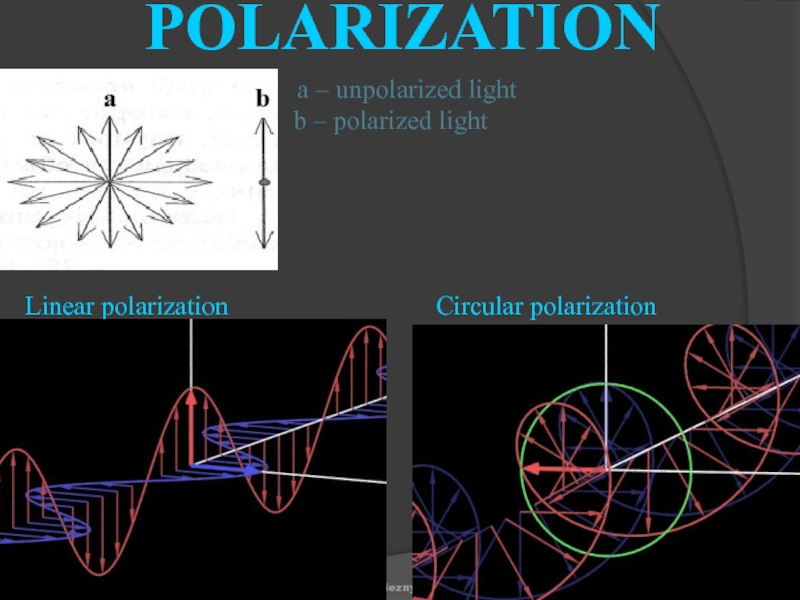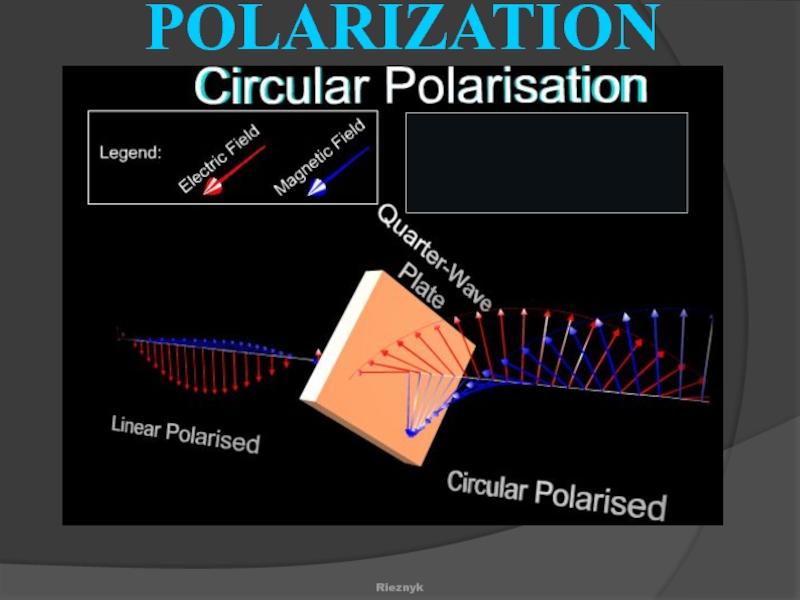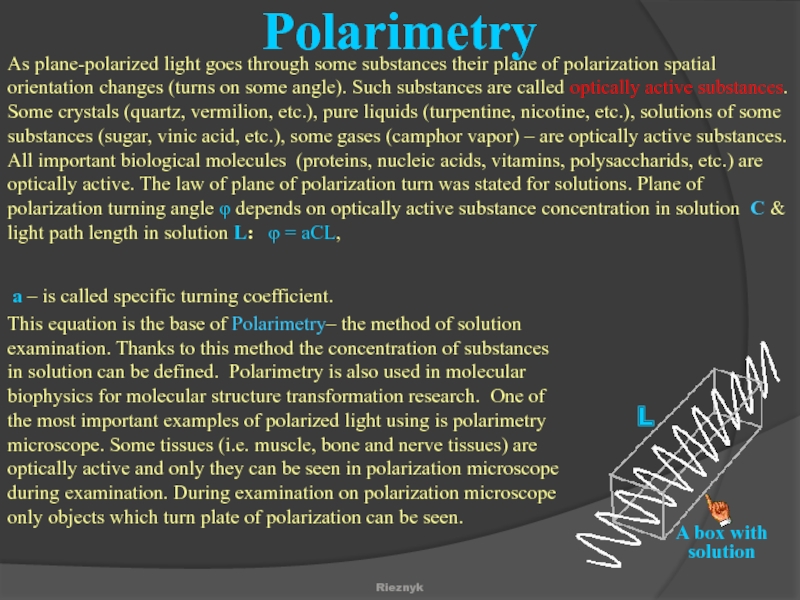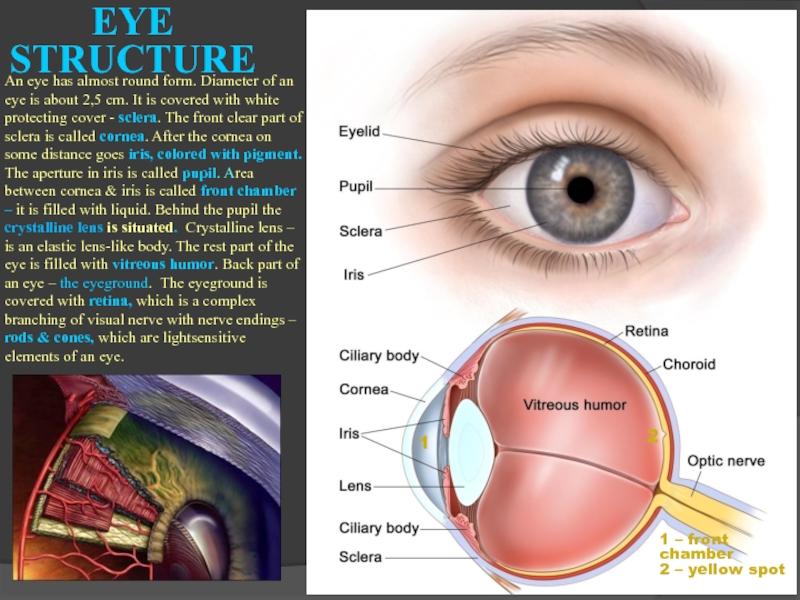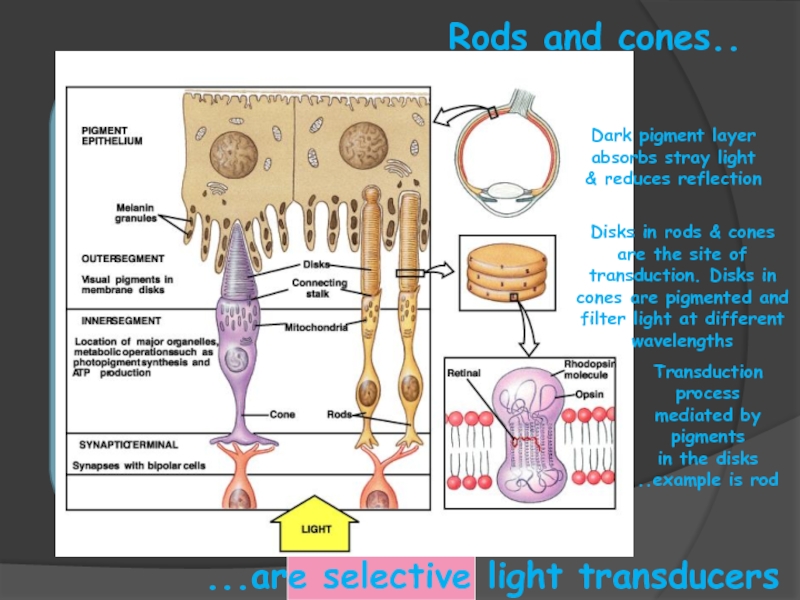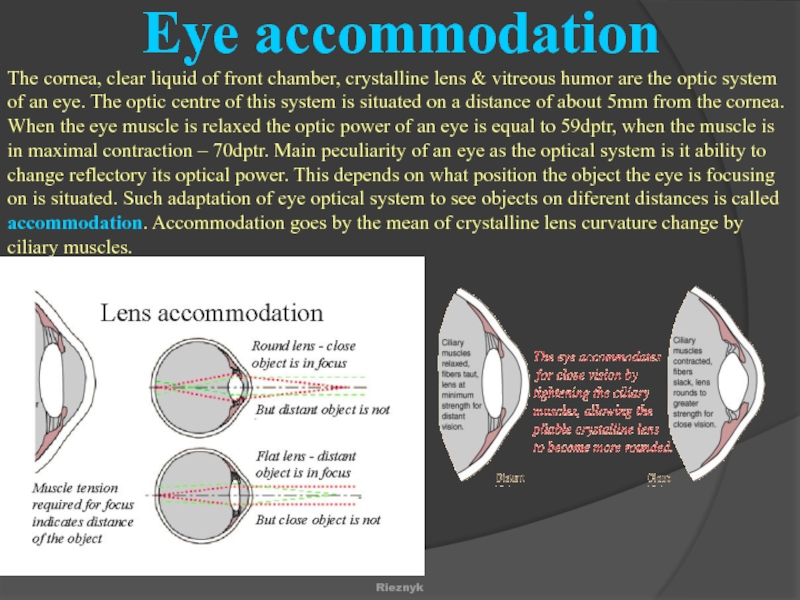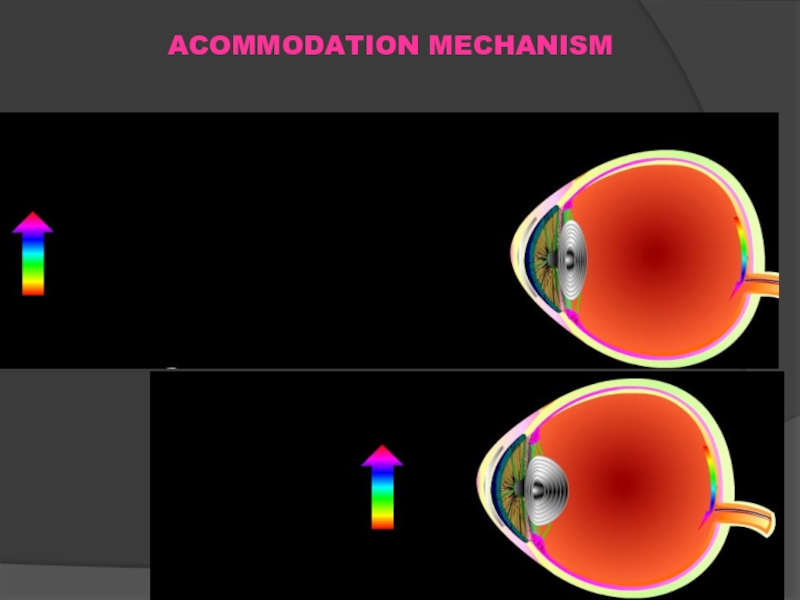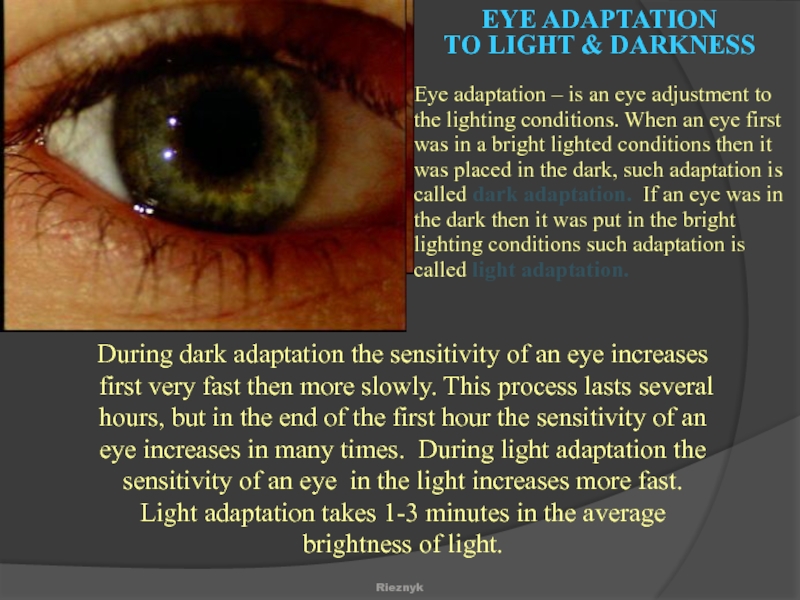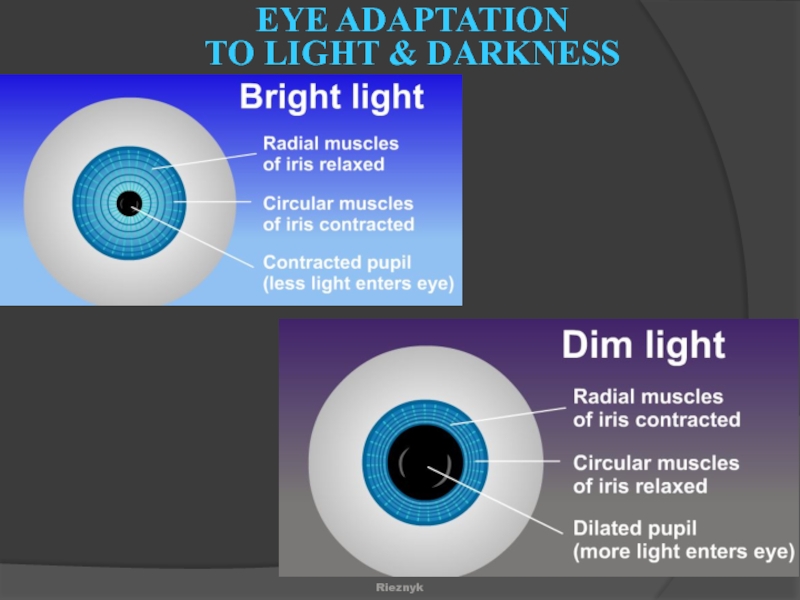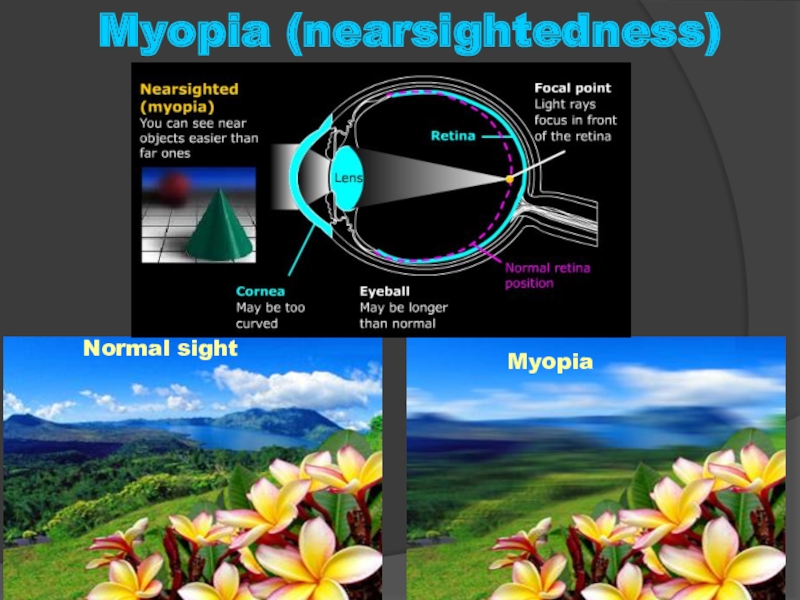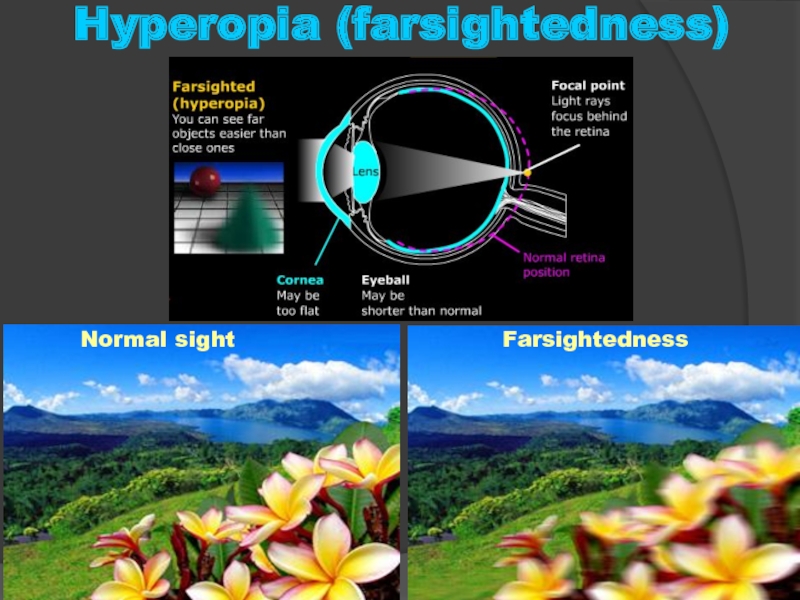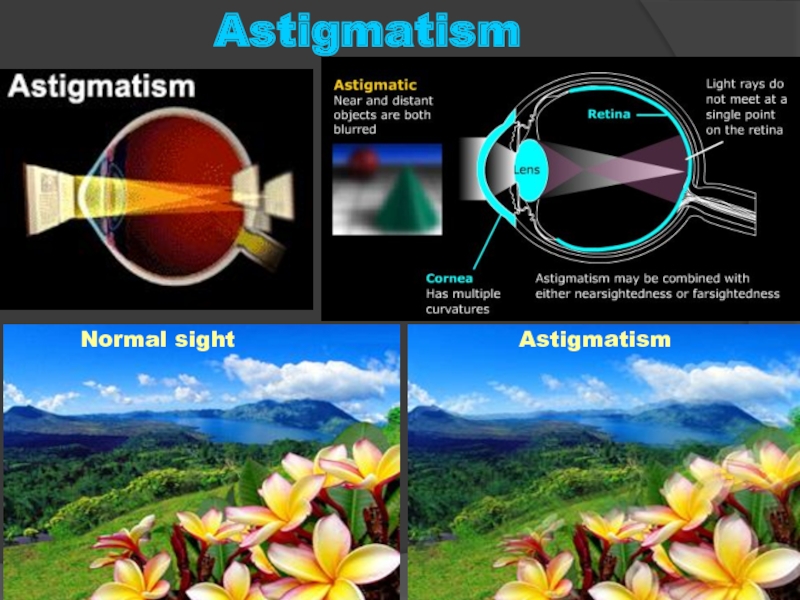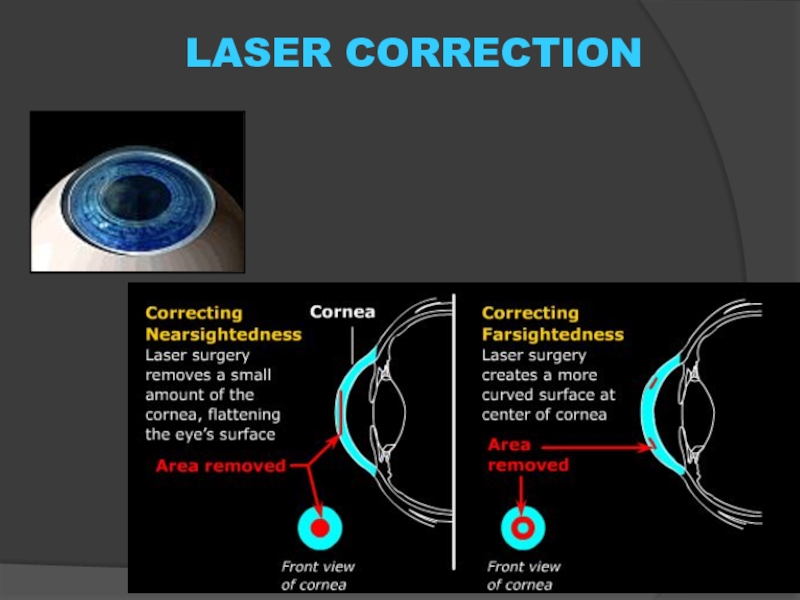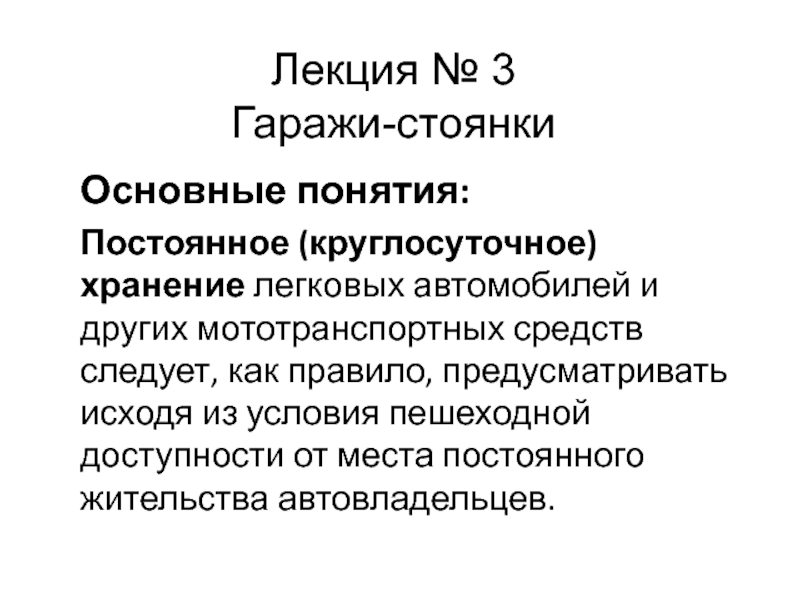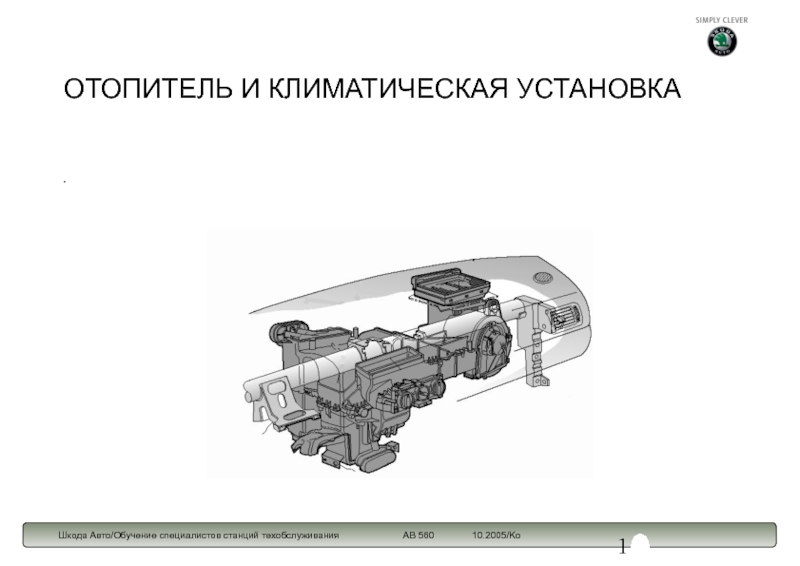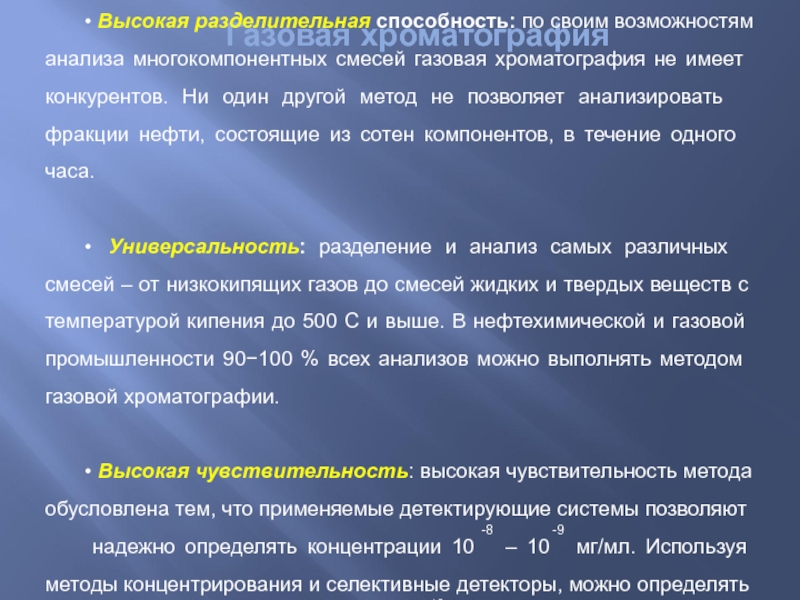- Главная
- Разное
- Дизайн
- Бизнес и предпринимательство
- Аналитика
- Образование
- Развлечения
- Красота и здоровье
- Финансы
- Государство
- Путешествия
- Спорт
- Недвижимость
- Армия
- Графика
- Культурология
- Еда и кулинария
- Лингвистика
- Английский язык
- Астрономия
- Алгебра
- Биология
- География
- Детские презентации
- Информатика
- История
- Литература
- Маркетинг
- Математика
- Медицина
- Менеджмент
- Музыка
- МХК
- Немецкий язык
- ОБЖ
- Обществознание
- Окружающий мир
- Педагогика
- Русский язык
- Технология
- Физика
- Философия
- Химия
- Шаблоны, картинки для презентаций
- Экология
- Экономика
- Юриспруденция
Physical basis of optic. Rieznyk презентация
Содержание
- 1. Physical basis of optic. Rieznyk
- 2. OPTICS Optics – is a part of
- 3. LAWS OF GEOMETRICAL OPTICS Law of reflection
- 4. REFLECTION & REFRACTION Rieznyk
- 5. Effect of total internal reflection can be
- 6. Rieznyk EFFECT OF TOTAL INTERNAL REFLECTION
- 7. Total internal reflection effect is used in
- 8. Lens is a clear body, limited with
- 9. Lenses are used to change light rays
- 10. Rieznyk
- 11. Rieznyk LENSE ABERRATIONS Spherical aberration Chromatical aberration
- 12. OPTICAL MICROSCOPE Microscope is used to get
- 13. DIFFRACTION Diffraction – is the effect of
- 14. Linear polarization Circular polarization POLARIZATION Rieznyk
- 15. Rieznyk POLARIZATION
- 16. As plane-polarized light goes through some substances
- 17. EYE STRUCTURE 1 1 – front
- 19. The cornea, clear liquid of front chamber,
- 20. Rieznyk ACOMMODATION MECHANISM
- 21. EYE ADAPTATION TO LIGHT & DARKNESS
- 22. EYE ADAPTATION TO LIGHT & DARKNESS Rieznyk
- 23. Normal sight Myopia Myopia (nearsightedness)
- 24. Normal sight Farsightedness Hyperopia (farsightedness)
- 25. Normal sight Astigmatism Astigmatism
- 26. Rieznyk LASER CORRECTION
Слайд 2OPTICS
Optics – is a part of physics which studies optical radiation
Geometrical optics studies the geometry of light rays, their propagation & the laws of reflection, refraction in mediums with different optical properties.
Light ray – is a geometrical line along which the electromagnetic radiation propagates.
Light ray – is a geometrical value. In some cases its better to replace physical value “light wave ” with geometrical value - “light ray”. Thanks to this value the direction of light energy propagation can be found.
Wave optics – is a part of optics which considers light to be an electromagnetic wave. Wave optics studies events that show the wave properties of light (transverse electromagnetic wave).
Rieznyk
Слайд 3LAWS OF GEOMETRICAL OPTICS
Law of reflection : incident ray, reflected ray
Law of refraction: incident ray, refracted ray & perpendicular (normal) to the two mediums border in the point of ray incidence lie in one plane. Relation between incident ray sine α to the refraction angle sine β is a constant value for two mediums:
Constant value n2-1 is called relative refraction index of one medium to another. Refraction index of a medium relatively to vacuum is called absolute refraction index. Relative refraction index of two mediums is equal to relation of their absolute refraction indexes:
sinα/sinβ = n2-1 = const
n2-1 = n2/n1
Rieznyk
Слайд 5Effect of total internal reflection can be seen as the light
EFFECT OF TOTAL INTERNAL REFLECTION
Rieznyk
Слайд 7Total internal reflection effect is used in optic fibers which are
FIBER OPTICS
Слайд 8Lens is a clear body, limited with two spherical surfaces.
Main optical
LENSES
There are convex lens & concave lens.
If the beam of light rays parallel to main optical axis goes through the lens they will be gathered in one point after the lens called main focus of lens F.
Convex lens has real focuses. Concave lens has virtual focuses. Distance from optical centre of lens and its main focus is called focal length F.
Concave lens
Convex lens
Concave lens
Convex lens
Rieznyk
Слайд 9Lenses are used to change light rays direction in optics. Main
IMAGE CONSTRUCTION IN LENSES
Rieznyk
Object behind the focus
A-B - object
F – focal length
L – lens
A1-B1 – image (inverted, real, enlarged)
Object after focus
A-B - object
F – focal length
A’-B’ – image (straight, virtual, enlarged)
Слайд 12OPTICAL MICROSCOPE
Microscope is used to get the enlarged images of small
Ocular plays the role of magnifying glass for the first image, built by objective.
RAYS PATHS IN
MICROSCOPE
Слайд 13DIFFRACTION
Diffraction – is the effect of waves rounding of the obstacle.
Scheme of diffraction grate
Слайд 14Linear polarization
Circular polarization
POLARIZATION
Rieznyk
a – unpolarized light
b – polarized
Слайд 16As plane-polarized light goes through some substances their plane of polarization
Polarimetry
а – is called specific turning coefficient.
This equation is the base of Polarimetry– the method of solution examination. Thanks to this method the concentration of substances in solution can be defined. Polarimetry is also used in molecular biophysics for molecular structure transformation research. One of the most important examples of polarized light using is polarimetry microscope. Some tissues (i.e. muscle, bone and nerve tissues) are optically active and only they can be seen in polarization microscope during examination. During examination on polarization microscope only objects which turn plate of polarization can be seen.
A box with
solution
L
Rieznyk
Слайд 17EYE
STRUCTURE
1
1 – front
chamber
2 – yellow spot
An eye has almost
2
Слайд 18
Rods and cones..
...are selective light transducers
Dark pigment layer
absorbs stray light
& reduces
Disks in rods & cones are the site of transduction. Disks in cones are pigmented and filter light at different wavelengths
Transduction process
mediated by pigments
in the disks
..example is rod
Слайд 19The cornea, clear liquid of front chamber, crystalline lens & vitreous
Eye accommodation
Rieznyk
Слайд 21EYE ADAPTATION
TO LIGHT & DARKNESS
Eye adaptation – is an
Rieznyk
During dark adaptation the sensitivity of an eye increases first very fast then more slowly. This process lasts several hours, but in the end of the first hour the sensitivity of an eye increases in many times. During light adaptation the sensitivity of an eye in the light increases more fast. Light adaptation takes 1-3 minutes in the average brightness of light.
